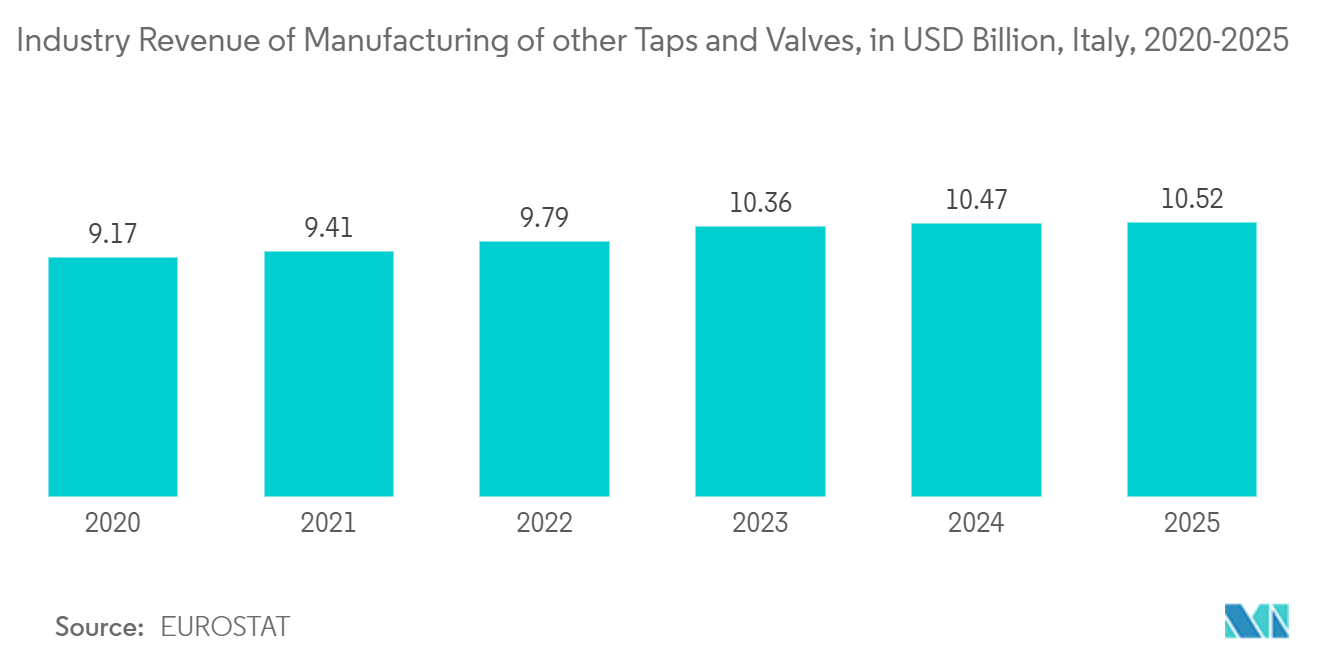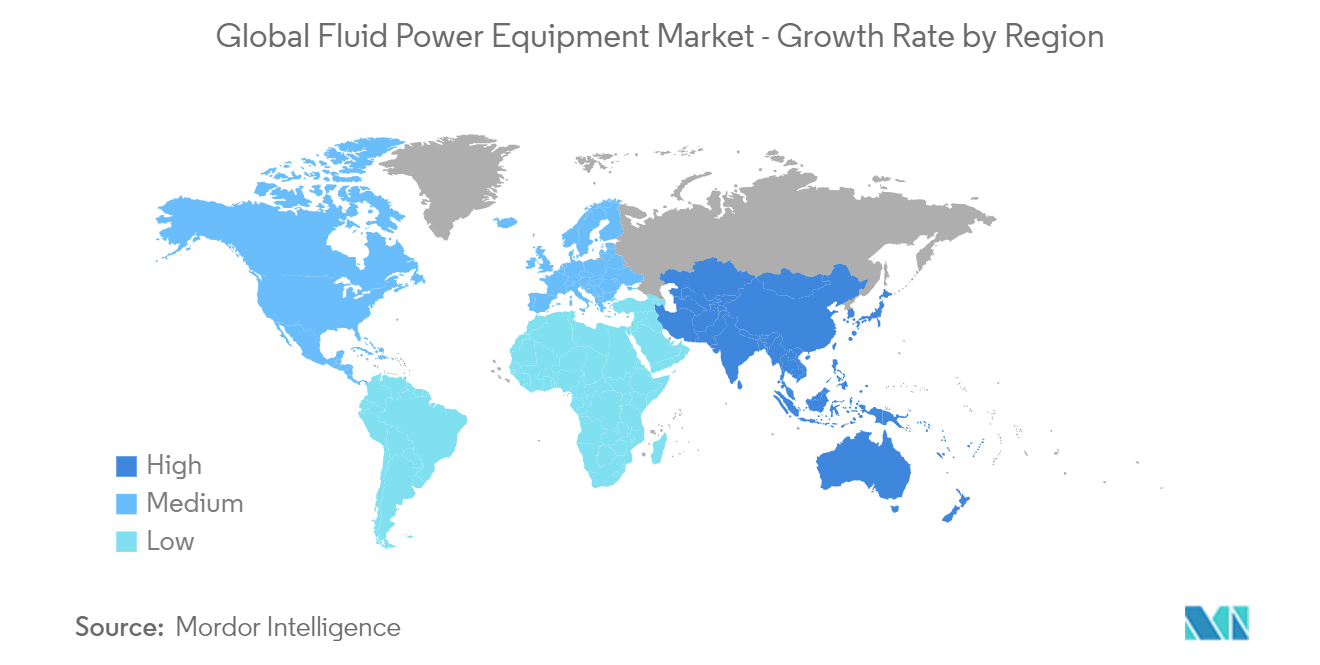Market Trends of Fluid Power Equipment Industry
Valves Holds a Significant Share in the Market
- Pneumatic valves include mechanical valves, manual valves, solenoid-piloted, air piloted, and vacuum-piloted. Pneumatic systems that considerably depend on the force of compressed air to transmit power are substantially found in several industrial applications, from pneumatically operated power tools to diesel engines, thus, driving their usage in multiple applications.
- Further, in 2021, a US-based manufacturer of control valves and specialty fluid handling products, Warren Controls, launched its ILEA 2900E series of electrically actuated industrial globe-control valves. The series hosts a high-quality, modulating, linear, industrial electric valve actuator while featuring a rugged cast-iron body with various trim materials. The 2900E series is suited where value and long life are important objectives for applications, including wastewater.
- Furthermore, pressure relief valves generally control pressure present at their inlet port by exhausting pressure to the atmosphere. Relief valves are typically utilized only in receivers or air storage devices, such as accumulators, to prevent excessive pressurization. Also, other pneumatic systems are valves to control flow. Pneumatic directional valves are offered in multiple styles, sizes, and configurations, which allows free flow in one direction and prevents flow in the reverse direction. In addition, according to Eurostat, the revenue from the production of other taps and valves in Italy is expected to be around USD 10.52 billion by 2025, which will further drive the market's growth.
- In September 2021, Linde Hydraulics GmbH & Co. KG introduced its next generation of control valves. The new valve block VW 22/18 M5-03 for the open circuit is characterized by its modular system, whereby the Monoblock with five sections plus a pressure relief section represents the basic set-up. Optionally, three additional sections can be added on each side of the block, thus specifically addressing customer needs.
- Moreover, in 2021, Bosch Rexroth launched a pre-compensated valve platform making it easier for mobile machine builders to selectively combine a range of hydraulic control valves into a single, integrated, multifunctional control solution to match specific operational and performance requirements.
- Industry 4.0 is being driven by advancements in automation technologies, which are resulting in rapid growth in the usage of smart valves to gain better control over operation and safety. Furthermore, rising water demand, together with an increase in population resulted in greater water consumption per capita over time, despite decreased water supply.

North America to Witness Considerable Growth
- Due to the growing development in manufacturing and R&D activities in various industries across North America, the region holds a high market share. Furthermore, the rising number of initiatives taken to ensure the safety of the workers in industries, such as chemicals and oil and gas also support the market growth in the region.
- In oil and gas, hydraulic systems use fluid pressure to power a pump. That is done by pumping fluids downhole using a triplex pump designed for extremely high pressure, usually between approximately 2,000 and 5,000 psi. In general, hydraulic lifts have higher production volumes than mechanical lift pumps. According to EIA, it is expected that the US consumption of natural gas will average 82.5 billion cubic feet per day (Bcf/d) in 2021 and 83.8 Bcf/d in 2022. With increasing consumption, the market caters to potential growth.
- Furthermore, the increasing demand for hydraulic equipment in the construction industry is driving the market's growth. For instance, in April 2021, Kobelco Construction Machinery USA announced that the company had secured an engine supply agreement with Yanmarand Isuzu for the production of excavators and cranes in North America.
- Moreover, in May 2021, Hitachi Construction Machinery introduced a ZX50U excavator in North America, which uses the Hitachi triple H hydraulic system, which enables combined operations by adjusting the optimal flow rate for all actuators. In addition, in August 2022, Volvo North America introduced two electric construction machines to expand its electric construction line in North America. The machine runs by engaging the electric motors with hydraulic pumps. Such innovations are further driving the adoption of hydraulic equipment in the region.
- According to the US Department of Energy, compressed air systems use 10% of total power and around 16% of total motor system energy in US manufacturing businesses. It further states that compressed air systems are used in 70% of all manufacturing plants in the United States. The majority of these systems deliver compressed air to power a range of equipment in a given plant, such as machine tools, painting booths, material separation, and materials handling.
- Furthermore, the new FDA guidelines in the United States were enacted as part of the Food Safety Modernization Act, which requires strict disinfection and hygiene requirements. As a result, suppliers and packagers will be compelled to meet their needs for proper equipment cleaning. Pneumatic equipment is cleaner than hydraulic and other mechanical equipment, allowing it to be used in a variety of applications in the food processing industry. Such laws enable the region's market to flourish rapidly.

